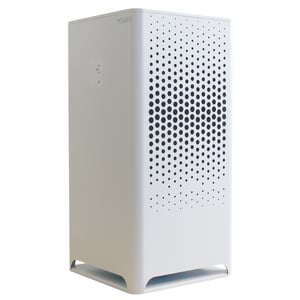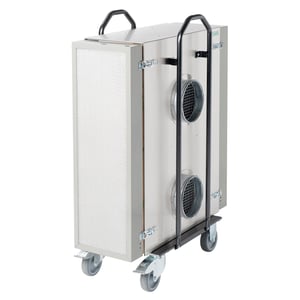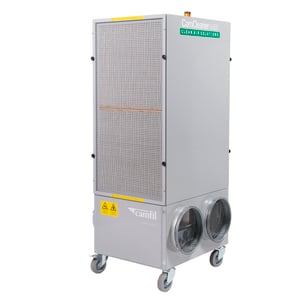Since the beginning of the Covid pandemic the spread of airborne diseases and how it transmits in indoor environments has been a discussion point for people throughout the world. Through guidance's set out by the World Health Organisation (WHO), REHVA and other local and international groups one recommendation remains constant. The use of HEPA air purification technology in poorly ventilated environments. To help show how effective these solutions are in these environments, Dr Kevin Nolan from the school of mechanical and materials engineering at University College Dublin put our solution to the test
Dr Kevin Nolan, from University College Dublin, analysed the capabilities of the City M at removing airborne aerosols from poorly ventilated environments. Read the full report to get access to the test methods performed and a comprehensive report on the performance of the City M according to his test parameters. This report studied two different factors to determine its effectiveness. The first concerns the flow kinematics associated with the device and the second the aerosol filtration capability.
At the end of the report Dr. Kevin Nolan concludes the following This study considered two sets of measurements. The first concerns the flow kinematics - how the flow moves to and from the device. The second set of measurements concerns the ability of the unit to rapidly reduce the amount of aerosol present. The measurements establish that the outflow from the device is maintained separate from the inflow stream for at least 1m radially. A recirculation zone extending up to 2m is observed indicating that the device has a broad area of effect. Due to the outflow vents on all sides and the dynamics of the low pressure inflows this is expected to provide robust air filtration in all directions. It is estimated that the flow circuit is completed in as little as 90 seconds. Since air is returned to the device up and over the outwards jet of filtered air (approximately 1m vertical spacing) care should be taken when during deployment as this may result in cross contamination via aerosol laden air. This means operational from floor level is advised.
The aerosol testing showed that the City-M offers robust and consistent filtration of large amounts of aerosol compared to no treatment. The City-M reduced particle sounds and observable laser scattering to negligible levels in less than 200 seconds. This represents a 3 to 4X improvement.
Restraints Noted: The Aerosol used during this experiment dissipated in a shorter period of time than airborne particulate and viruses are proven to remain in the air. The Aerosol lasted 8 minutes in the air with no treatment in a poorly ventilated environment with no regular occupancy. With a longer lasting aerosol experiments could have taken place in larger rooms and at further distances
“We are
very grateful to Camfil for allowing us to use their City M air purifiers for
the purpose of these experiments. Since the outbreak of COVID-19 it has become
more and more important to test new methods of keeping our indoor spaces clean
and free from airborne particles. Camfil’s City M air purifiers have proven to
be highly effective in removing the presence of aerosols quickly and
efficiently, creating a healthier and safer environment. Conducting these
experiments at the Mater Misericordiae Hospital in Dublin has allowed us to
display how hospitals can benefit from the use of top-quality air purifiers to
protect patients and staff”
Certified HEPA filters ensuring performance



